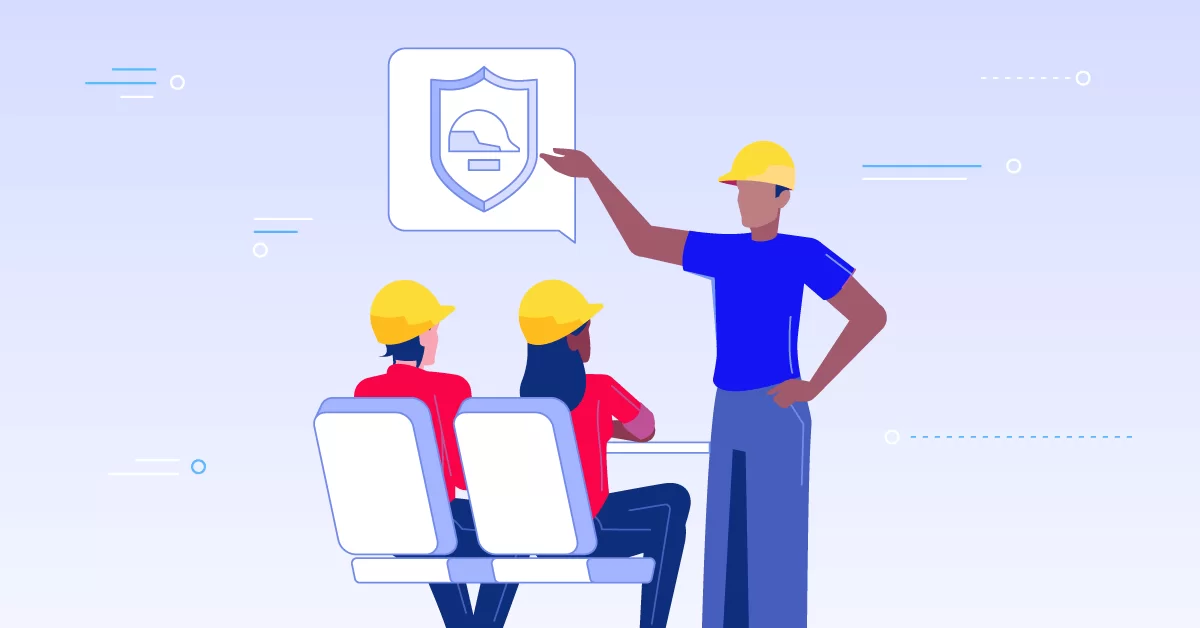And not just in eLearning courses meant for the general public — gamification is big in business and corporate training too, while an increasing number of enterprises is implementing game based eLearning courses or adding a touch of gamification to their existing courses.
And it works.
There’s nothing like a little competitive element to increase learning engagement and have enterprise employees try to outdo each other. Gamification, after all, is not that different from decades old employee motivation techniques such as “employee of the month” awards and employee recognition programs.
Why gamification works
Gamification, in essence, is based on the complementary ideas that man is a competitive creature, but also a creature that likes games — and not only just a child, but well beyond adulthood. One just has to point to the extreme popularity of sports to make the case for both assumptions.
Games and play in general are not just an acquired taste either, but something that we’re “wired” to enjoy, so to speak. It can be found in nature too, in all kinds of animals, including primates that are genetically extremely close to the homo sapiens.
The Dutch historian and anthropologist Johan Huizinga (1872 – 1945), even went as far as calling our species “homo ludens” (“the playing man”), and suggesting that play is an essential part to the generation of human culture.
There are several scientific theories that explain why playing games is important in nature. The “play as preparation” theory is based on the observation that play in animals often mimics adult themes of survival. Consider, too, how the initial set of Olympic sports were all based on skills essential in the ancient battle (running, throwing spears, wrestling, chariot racing, long jump, archery, etc.).
Play has also been found to help shape the brain, resulting in a more efficient cerebrum. It’s also a survival trait in itself, as it helps animals to learn to switch and improvise their behaviors and reactions more effectively, preparing them for the unexpected in a non-threatening setting.
Games also tap on our brains’ “motivational engines”. When we’re excited and engaged because of a sudden reward, our brain releases dopamine, which serves as a chemical agent (a “neurotransmitter” in scientific jargon) passing the signal of satisfaction around our neurons.
Given that our games trigger our pleasure centers and our brains want to relive the same experiences that gave us pleasure, dopamine is perhaps the greatest motivator we have at our disposal. It’s exactly this process of tapping into our brains’ motivational machinery that makes gamification techniques so effective.
In fact, the TalentLMS Gamification at Work Survey found that employees feel that gamification makes them more productive (87%), more engaged (84%) and happier (82%) at work.
How companies use gamification
Enough about the theory. How do companies use gamification in corporate training to engage employee motivation and enhance their business training programs in the real world?
The answer is: in many different ways, from the most basic schemes to quite advanced setups.
Cisco, for example, teaches social media skills to its employees and contractors through a multi-level training program that lets learners advance through the ranks to obtain the ultimate title of a social media “Master”, through 46 courses.
This level/title based approach was a wide success with hundreds of certified employees taking a total of 13,000 courses.
In another example, Engine Yard, a popular Cloud services platform focused on (popular web development framework) Ruby On Rails hosting, was facing difficulties with getting their employees and users to peruse its Knowledge Base portal.
By implementing a gamification system based on badges, achievements and missions that rewarded searches and contributions to the knowledge base, they show a 40% increase in knowledge base searches and customer support performance.
SAP, the leading Enterprise Resource Planning (ERP) solutions provider, had also leveraged to gamification techniques to train its sales representatives in the details and intricacies of its (quite complex) product line so that they can be more effective in answering customer inquiries.
They did so by implementing “RoadWarrior”, a game-show like application that simulates talking to a customer, and awards employees with badges and a place on the leaderboard for correctly answering customer questions.
Enterprise gamification solutions are not just good for eLearning scenarios, either. Salesforce, for example, a leading enterprise customer relationship management (CRM) provider, has also embraced gamification to help motivate employees in competing for better sales results.
In Salesforce’s case, this is achieved through their “Motivation” platform, their CRM add-on that implements common gamification techniques such as team leaderboards, progress bars, and goal-based challenges.
Gamification in eFront
As we show from the previous examples, while gamification applications can take various forms and follow different strategies and end goals, they all share some common elements: levels, badges, leaderboards, scores and the like.
eFront gives you access to all of these elements, and offers you enough flexibility in combining them and customizing them so that you can implement your own unique gamification strategy (or any common one, for that matter).
Let’s describe this basic gamification “lego blocks” that eFront has to offer.
Points
Points are the equivalent of “keeping score” in a game. In eFront a user’s total points are shown on their homepage header, with any newly award points briefly displayed in a non-intrusive popup message.
eFront gives you a lot of flexibility in configuring how and when points are to be awarded (for example, when a user completes a course, for each login to the LMS, etc.).
Badges
Badges are the equivalent of real world medals and similar distinctions.
In eFront, as in most established web-based gamification systems, badges are implemented as visual stamps (images), that are unlocked when the user achieves certain, err, achievements.
As is the case with the user’s points, badges are displayed in his homepage header and in his profile info.
eFront’s badge-awarding system makes acquiring budges increasingly difficult, as to make it more challenging for the users and help them maintain their interest and increase their efforts in the later stages of their training and development plan.
Levels
Levels are similar to ranks in the army or to getting promoted at work. In other words, they are a hierarchy that the user can slowly climb, and get increased access and perks.
eFront lets administrators customize when learners should get to the next level (e.g. when they reach N points, or when they have completed X courses or acquired a specific set of badges).
Leaderboards
Leaderboards add to the competitive spirit by making all of a user’s achievements (with regards to the previously described gamification elements) visible to all learners.
Similar to a “high score” list, leaderboards in eFront show a user’s ranking under several metrics (points awarded, badges earned, number of certifications, etc), as give them a sense of how good (or bad) they fare compared to other users.
Between these tools, and with the extra flexibility that comes from the numerous customization options available for each, eFront lets you implement any web-based gamification strategy you can come up with.
You don’t have to go crazy with all these options, mind you.
After all, your end goal is a more effective training program through the use of corporate gamification techniques — and not turning your enterprise training into FarmVille.
The best approach is an incremental one, in which you slowly introduce a few gamification options here and there, and take your time to see which ones work better and are more effective for your enterprise training needs and with your employees. And, of course, if some particular gamification element doesn’t seem to work, you can always take it out.
Game got real
While a purely virtual gamification strategy is very effective in increasing user participation and engagement (and, as a consequence, training effectiveness), it can be made even more effective is it’s combined with actual perks and rewards for your best learners.
This can be anything the crosses the digital barrier and enters the real world, from a promotion for your best performing employee, to bonuses or even physical token awards (e.g. from an award trophy to free beer).
While not essential, such gestures are indicative that your gamification strategy is not just a virtual carrot, but something that can also lead to real workplace benefits.
To play or not to play?
In our (informed) opinion the real question is not whether you should introduce gamification elements to your eLearning, but rather how soon.
With it’s demonstrated and measurable effectives, gamification will be an inherent part of eLearning and corporate employee training in the future, and it’s increasing adoption by all kinds of businesses proves that it’s not some kind of fad, but a natural extension of training, with deep roots in pedagogy and human psychology.
We suggest you give a good look of eFront’s powerful gamification engine, and try to incrementally introduce some gamification elements to your corporate training.
After all, you don’t want your competitors to get that shiny “we use gamification” badge before you, do you?


